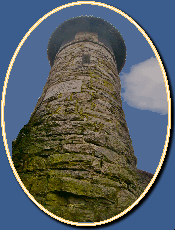Civil War injury led to invention of the telephone switchboard
Had George Willard Coy not been wounded in the Civil War, he may not have invented the telephone switchboard, the first great advancement since the invention of the telephone. He would settle in Milford after his important invention in nearby New Haven.
Coy was born in Freedom, Me. November 13, 1836, the next to youngest of seven children. His mother died in 1843, and he was raised by his oldest sister, Olive, in Bridgewater, Mass. He attended public school until 1852 then he went to sea. Returning in 1857, he was apprenticed to a shoemaker in Rockland, Mass. at the home of another sister, Mrs. Eunice Keane, but broke his shoemaking contract to enlist as a private in the Army in 1858. His five-year term carried him through some early campaigns of the Civil War until his discharge on March 17, 1863. In November 1863, he re-enlisted, again as a private, for three years during which he saw action in major battles at Antietam, Wilderness, Spottsylvania, Cold Harbor and Petersburg.
At Petersburg, Va. on June 17, 1864 he was severely wounded by shell fragments in the left arm and shoulder. For the next 10 months he was treated in Army Hospitals in Washington and Baltimore. With his arm permanently incapacitated, he was honorably discharged June 5, 1865 in Baltimore. He returned to again live with his sister, Olive, and her husband in Rockland. There he established a newspaper and tobacco store. He left in 1867 to study telegraphy at a school for disabled veterans in Albany, N.Y.
Completing the course in Albany, he found a job in New Haven as manager of the local office of the Atlantic and Pacific Telegraph Company. On April 27, 1877, Coy attended a demonstration at New Haven's Skiff’s Opera House of an exciting new communication invention, the telephone, given by its inventor, Alexander Graham Bell. Bell’s discussion of the implications of the telephone for business and trade, accompanied by music transmitted over a three-way New Haven-Middletown-Hartford connection, spurred Coy to action. On Nov. 3, 1877, Coy applied for and received a franchise from the Bell Telephone Company for New Haven and Middlesex Counties. With Herrick P. Frost and Walter Lewis who provided the $600 capital, on Jan. 5, 1878 he established the District Telephone Company of New Haven, the world’s first commercial telephone exchange.
For this operation, Coy designed and built the world’s first switchboard for commercial use. According to one source, it was constructed of “carriage bolts, handles from teapot lids and bustle wire.” All the furnishings of the office, including the switchboard, were worth less than $40. The office was a rented storefront in a building, since demolished, at the corner of State and Chapel Streets. Before this time, the first telephones were used privately on lines that allowed two people on each end to communicate over a short distance. Coy's switchboard could connect as many as 64 customers! Still it was limited as only two conversations could be handled simultaneously and six connections had to be made for every call.
The District Telephone Company of New Haven started with 21 subscribers, who paid $1.50 per month. By Feb. 21, 1878 when the first telephone directory was published by the company, 50 subscribers were listed. In 1879 he sold his shares in the company which grew to become Southern New England Telephone in 1882. He bought a large house in Milford where he resided almost to the end of his life.
Coy apparently spent time in Milford before buying the house as, on May 18, 1872, he married Malina Nettleton of that city. They had three children: Charles, George, and Bertha. From 1880 onward he was active in telephone affairs in New York City. During these years he was awarded several patents and made many improvements in telephony. He finally retired in 1898.
In Milford, he was active in Grand Army of the Republic (GAR) affairs. In 1888 he was commander of GAR Post 59 and appointed committees, designed and raised funds for the Civil War Monument on Milford Green. During the last few years of his life he lived at the Soldiers’ Home in Chelsea, Mass. where he died Jan. 23, 1915. He is buried in Milford Cemetery.



